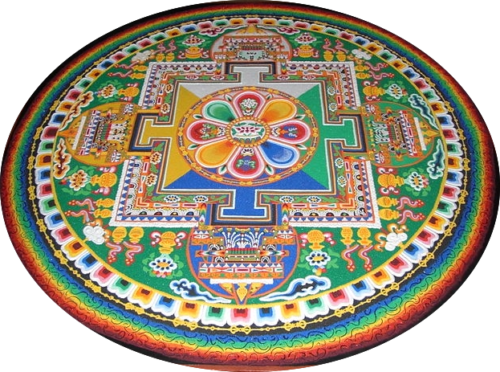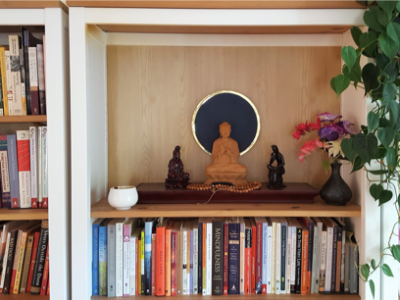On Mandalas
About This Resource
Details
When an artist in Taiwan asked Dzongsar Khyentse Rinpoche to share some insights about mandalas in August, 2021, his response provided some simple yet profound ideas that bring this profound concept into focus in a way that can feed into your lesson plans.
There are many resources designed for children to interact with mandalas, including Rigpe Yeshe’s Nature Mandala Activity, the Rubin Museum’s Mandala Lab and Wakeful Wanderings, as well as the Middle Way School’s Boundary Walk Lesson. The subject of mandalas is vast, fun to explore with children, and can be studied on many different levels. Because coloring mandalas has become so popular, often the Buddhist context for understanding mandalas is not the first thing that comes to mind.
The Rigpa Shedra Wiki page states that, “Mandala (Tibetan: kyilkhor) can be translated literally as ‘center and circumference‘. A mandala is generally depicted as a circle which revolves around a center. On the simplest level, a mandala can be understood to be us, the student or practitioner, and the phenomenal world around us.” If you are interested in studying more, Chogyam Trungpa’s book Orderly Chaos is an advanced discussion of the subject of mandalas.
We recommend watching the first six minutes of this 14 minute interview. Rinpoche explains that there is something called chaos, and something called order, and that balancing, or going beyond both order and chaos is what we want, to awaken. He talks about the non-duality of the center and perimeter of the mandala, and how much of our struggle as humans comes from our wish to try and make order out of chaos. You don’t need to understand these ideas in order to approach and enjoy mandala activities with children, but for those who are wishing to learn a little more, this refreshingly direct video provides a glimpse into the really big ideas that mandalas represent.
Photo credit: Colonel Warden




